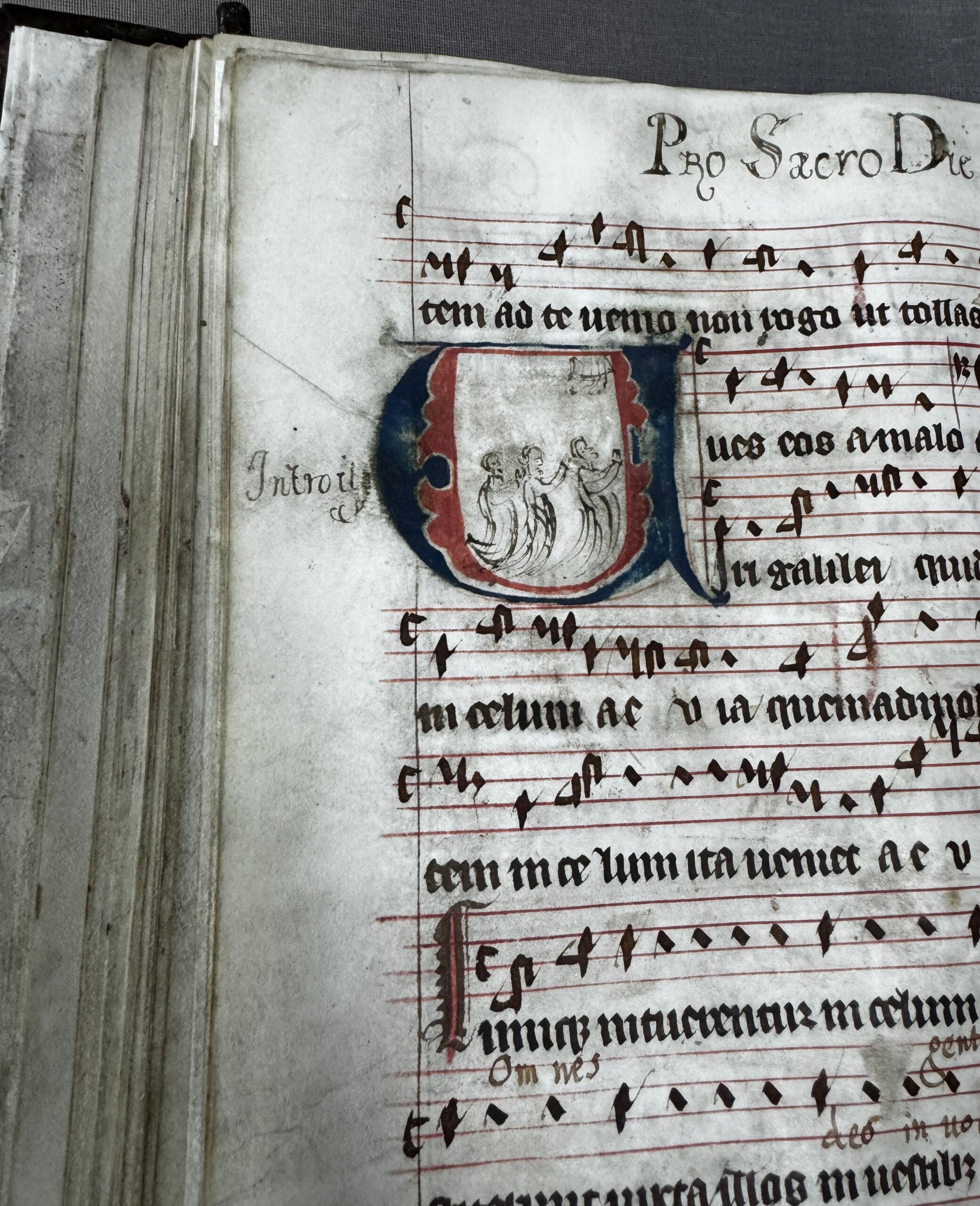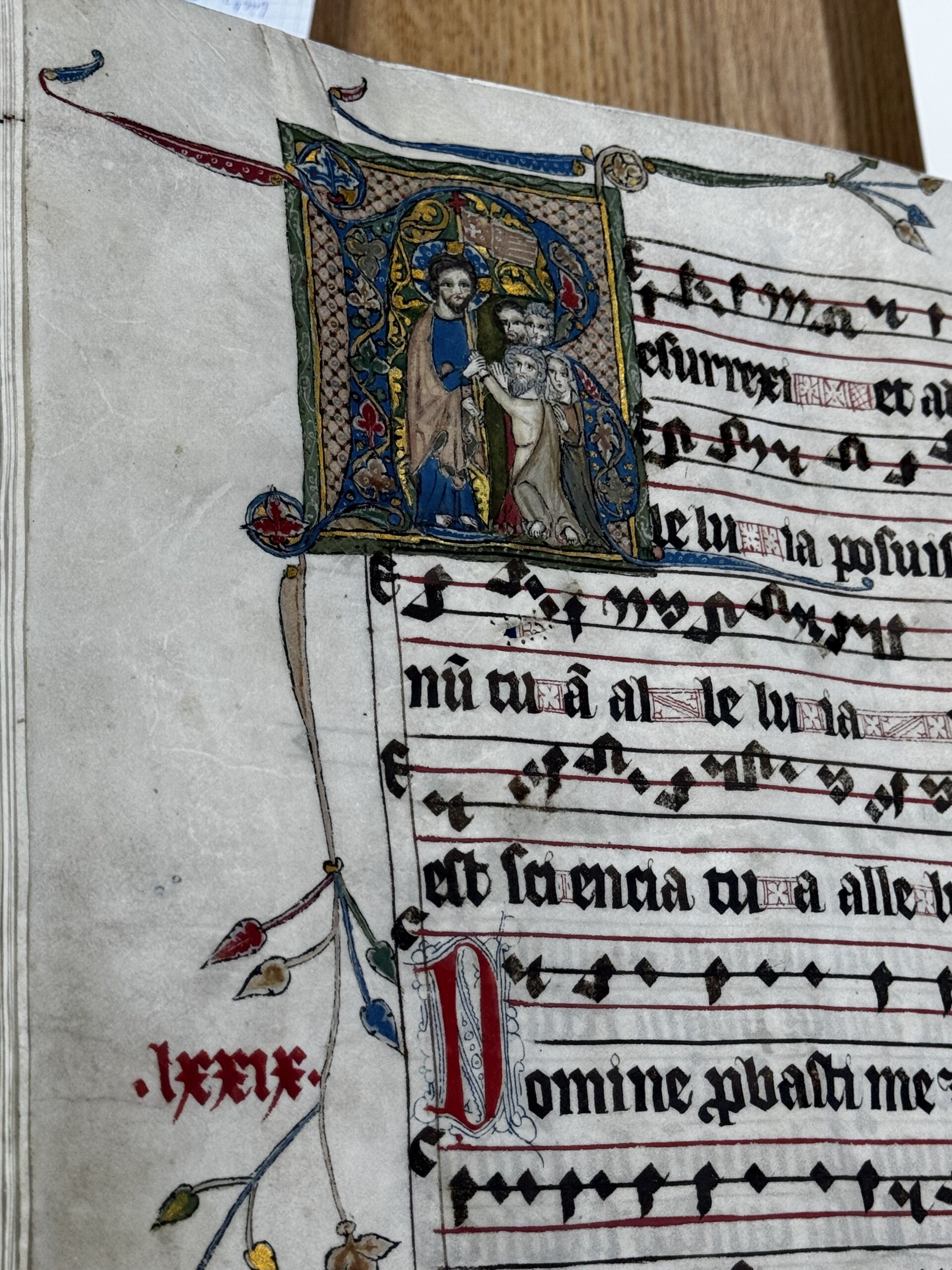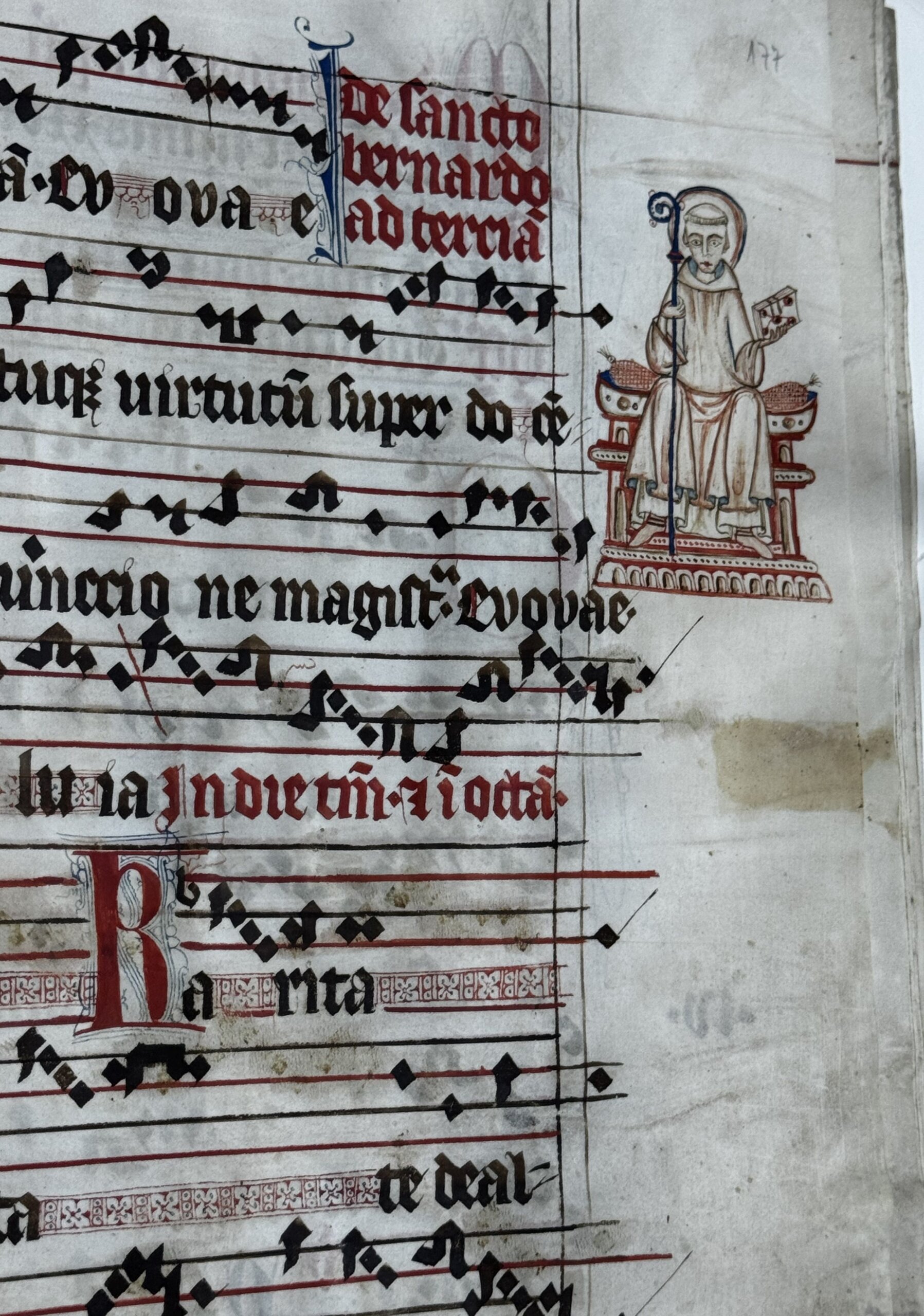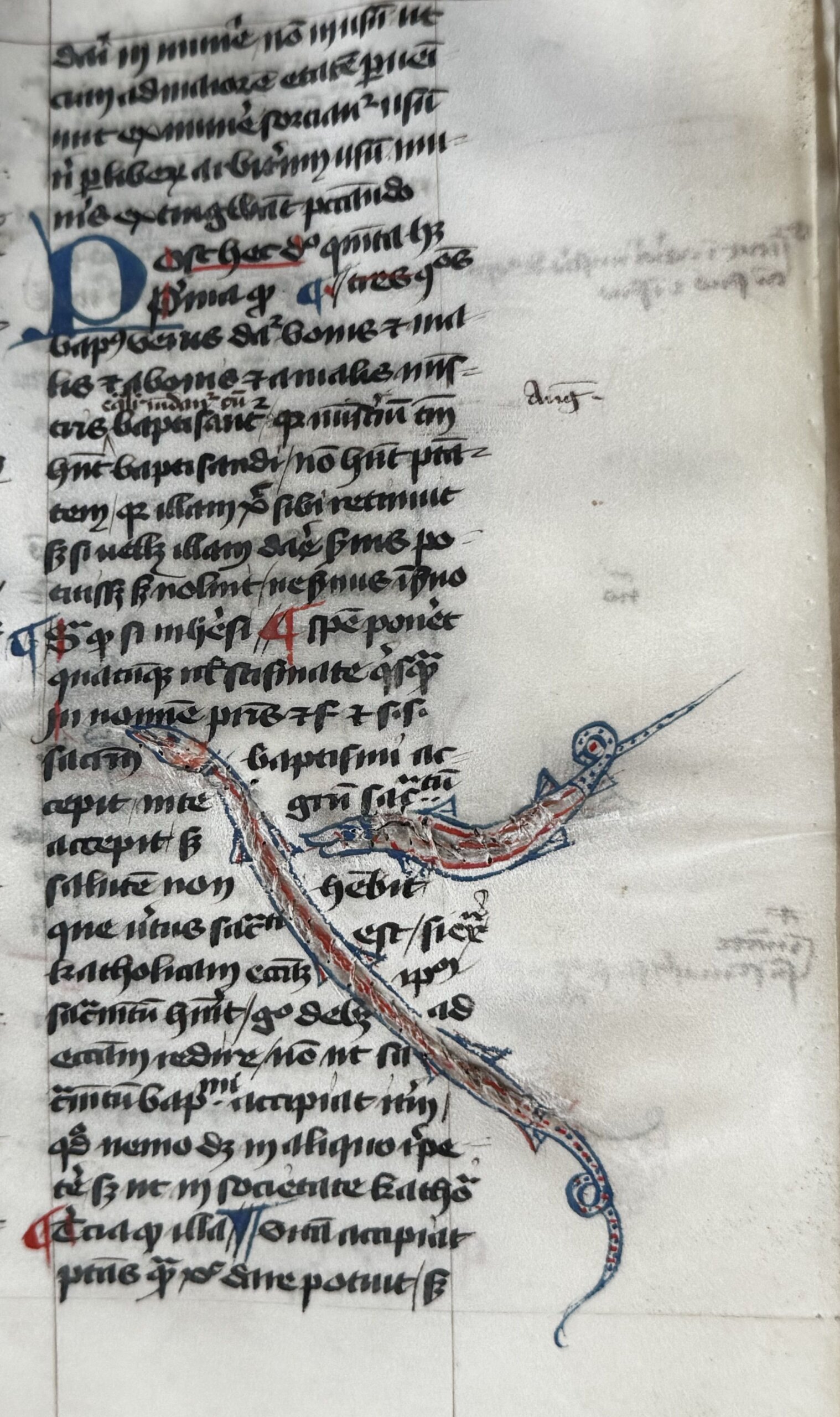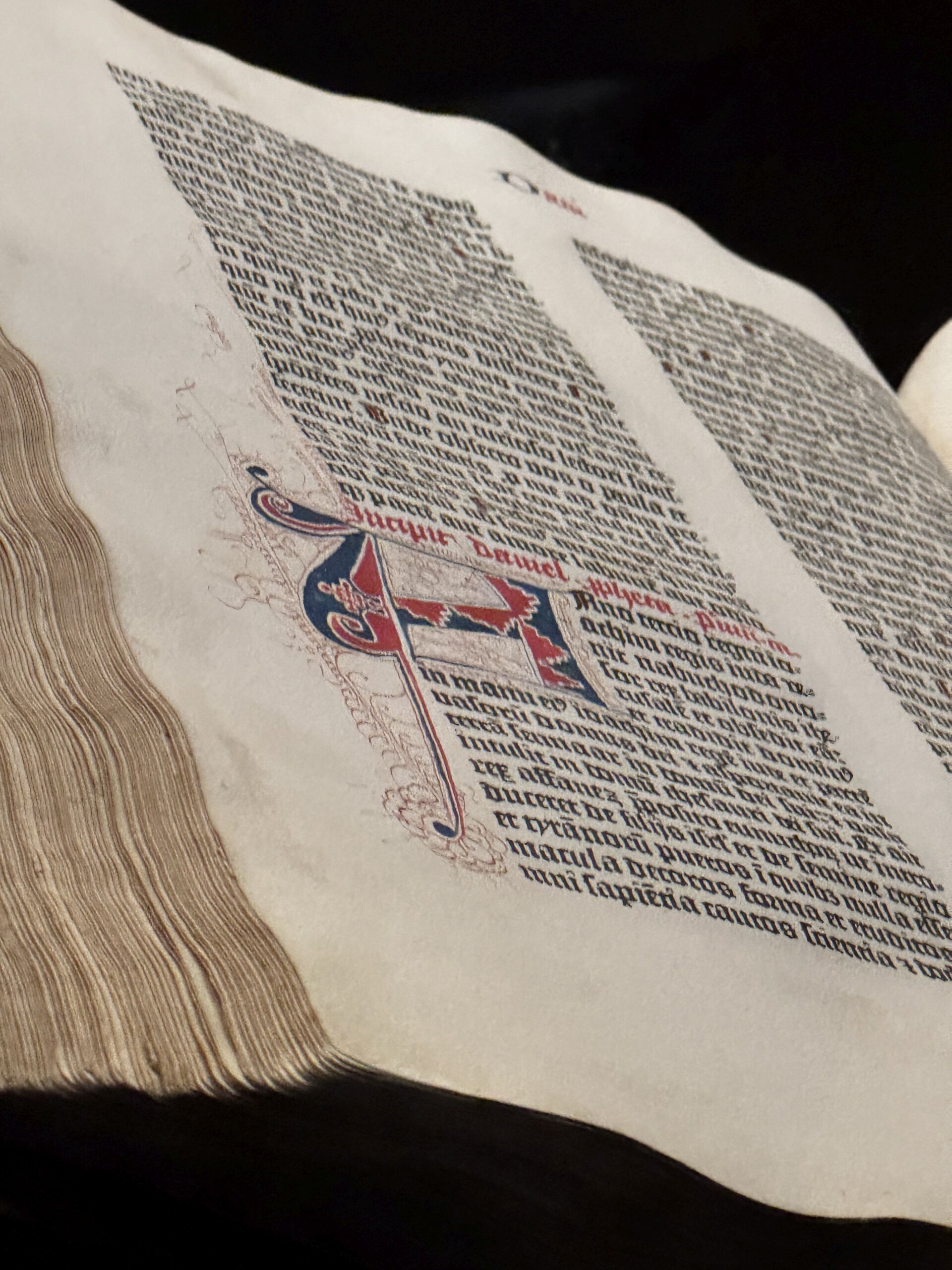Manuscripts and early printed treasures in Pelplin
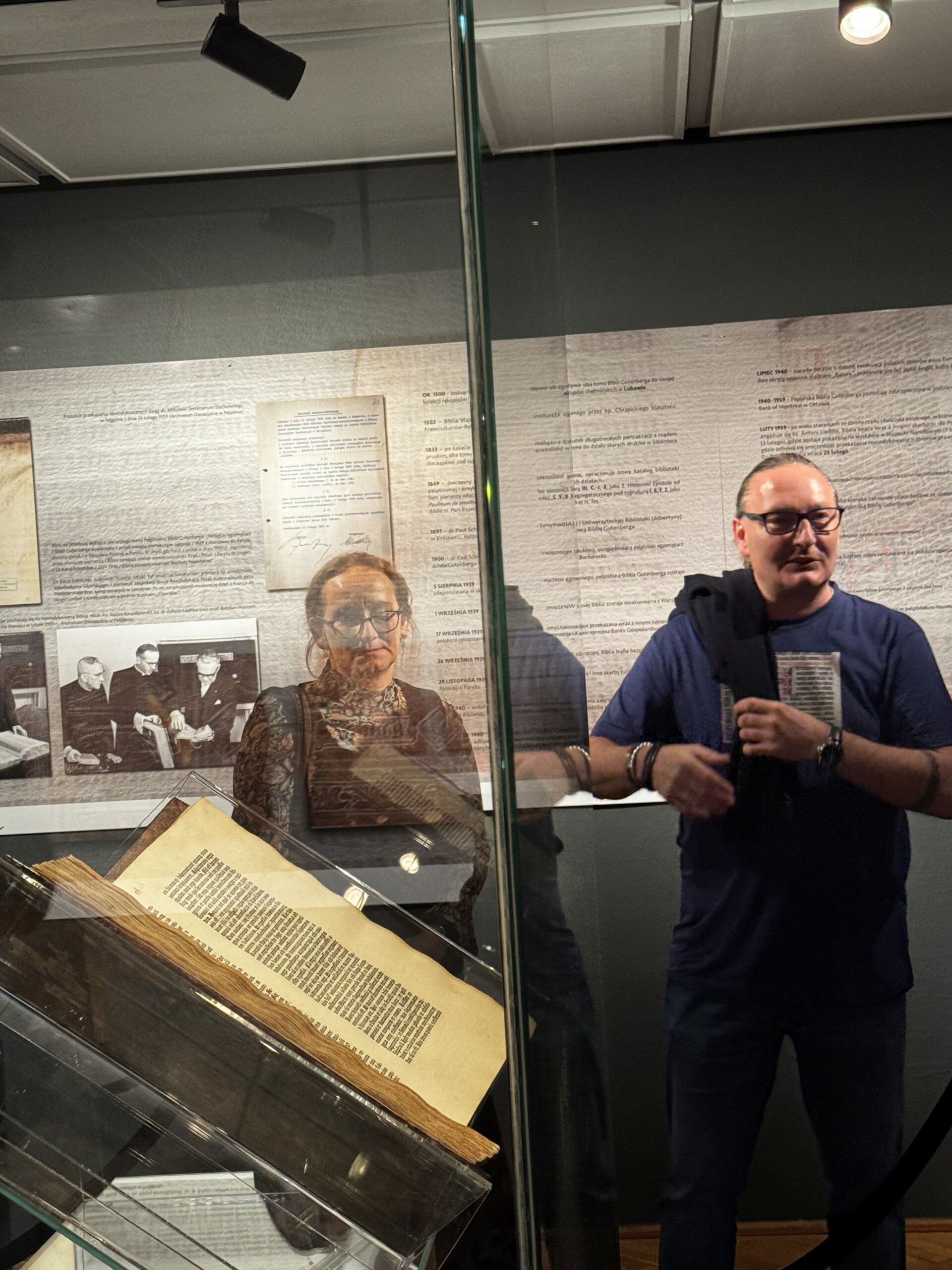
On 11 October 2025, members of the Research Group for the Study of Manuscript SIGLUM went on their second joint field trip – this time to Pelplin. Our visit focused on the Diocesan Museum of Bishop Stanisław Wojciech Okoniewski, in particular the exhibition devoted to the Gutenberg Bible. In recent years, this exceptional art heritage object has undergone comprehensive research and conservation carried out within the international project Saving the Pelplin Gutenberg Bible, supervised by Prof. Juliusz Raczkowski (Nicolaus Copernicus University, Toruń).
Prof. Raczkowski, who was our guide, introduced us to one of the most valuable surviving copies of the first printed Latin Bible. The Pelplin copy is of particular significance for several reasons. It is one of the earliest “test” copies – as indicated by a number of symbols and marks, invisible to the naked eye, discovered during the project. Printers used them as cues to indicate elements requiring correction in subsequent impressions. A remarkable feature is the accidental imprint of a type on the margin of fol. 46r, which made it possible to determine the exact size of Gutenberg’s typeface. Thanks to ownership inscriptions and provenance evidence uncovered during the material analysis, scholars have been able to reconstruct the history of both volumes with remarkable precision, further enhancing the significance of this copy of Gutenberg’s Bible.
 Prof. Monika Jakubek-Raczkowska (Nicolaus Copernicus University, Toruń) introduced us to the museum’s collection of Gothic sculptures, some of which are of world-class importance.
Prof. Monika Jakubek-Raczkowska (Nicolaus Copernicus University, Toruń) introduced us to the museum’s collection of Gothic sculptures, some of which are of world-class importance.
The second part of our visit focused on the manuscripts held in the Diocesan Library of Bishop Jan Bernard Szlaga in Pelplin. Illuminated theological and philosophical manuscripts were presented by Dr Mateusz F. Marszałkowski, while Dr Piotr Ziółkowski, a member of the Liturgica Poloniae project team, affiliated with SIGLUM, discussed the musical manuscripts.
Dr Marszałkowski outlined the activity of the Cistercian scriptorium in the Middle Ages, including its foundation collection and manuscripts copied in Doberan, the mother abbey of Pelplin, which served as models for the first Pelplin scribes. He also presented locally produced manuscripts, with special attention to Brother Jan, the Pelplin scribe and illuminator whose skillful hand and vivid imagination produced some of the most remarkable codices of the late fourteenth century.
Dr Ziółkowski discussed manuscripts originating from the Doberan monastery, including two volumes of a gradual encompassing the entire liturgical year (de tempore and de sanctis), as well as locally written manuscripts – graduals, antiphonaries, and a processional (partly produced in Pelplin). The most admired among them was Gradual L13, a masterpiece attributed to Brother Jan.
During the visit, the group also toured the cloisters and garth of Pelplin Cathedral, guided once again by Prof. Raczkowski, who provided expert commentary on the history of the Cistercian order, the architecture, and its medieval and modern furnishings.
We would like to express our heartfelt thanks to our guides for sharing their expertise, enthusiasm, and affection for the Pelplin collections. Our gratitude also goes to Rev. Prof. Jan Walkusz, Director of the Diocesan Library, and Rev. Krystian Feddek, Director of the Diocesan Museum, for their kind assistance in organising this visit.
* M. F. Marszałkowski is the author of a two-volume monograph devoted to the illuminated manuscripts produced in the Pelplin scriptorium.
** Gradual L13 has been the subject of extensive research resulting in both a scholarly monograph and a digital edition of the manuscript.
Authors: Monika Opalińska and Agnieszka Fabiańska, photo: Barbara Wagner


